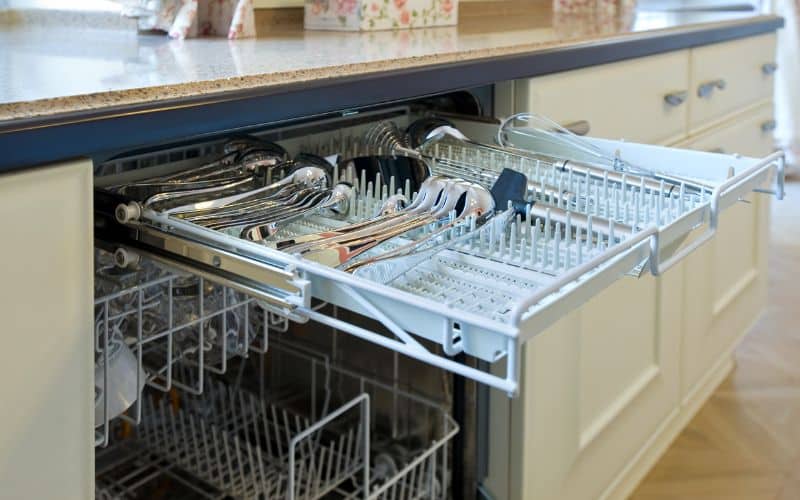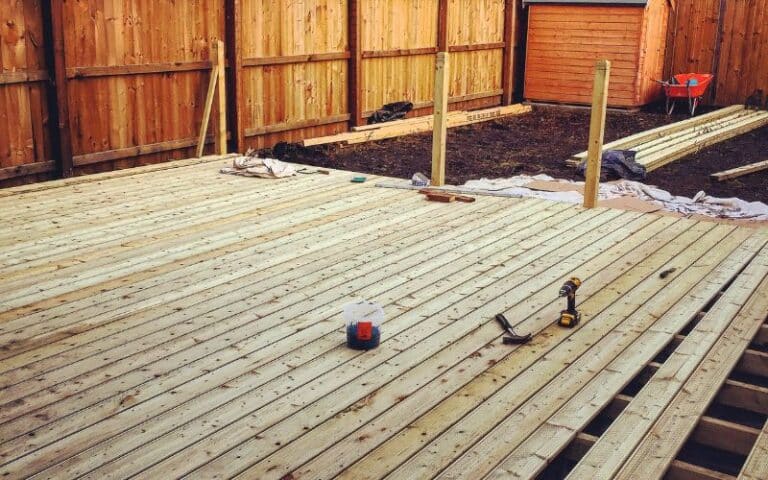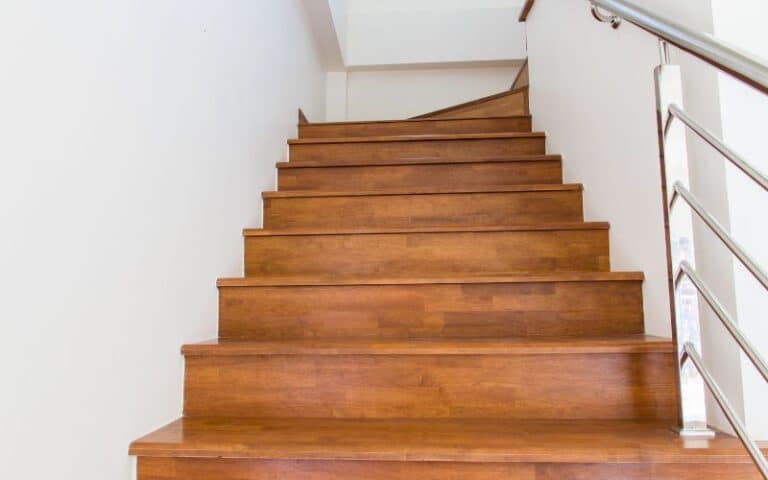The drainage system of a dishwasher is an important part of its installation process that nobody should ignore.
A dishwasher is usually installed close to a sink and connected to its drainage system, but not everyone chooses this path for various reasons.
Alternatively, some people must run their dishwasher’s drain through the floor to remedy a drainage issue.
You’re in the right place if you have questions about running a dishwasher drain through the floor.
You can run your dishwasher’s drain through the floor with a trustworthy drainage system installed below it. However, ensure that your drain hose is long enough to pass through the floor and that no damage risks are involved. You’ll also need to protect the hose pipe with a trench to avoid drainage issues in the future.
In this article, I’ll explain if you can drain your dishwasher through the floor and the common problems you might face.
By the end, you’ll know where a dishwasher drain should go and if it can be drained through the floor using a waste pipe.
Ready for a Flooring Quiz?
Can You Drain Your Dishwasher Through the Floor?

You can drain your dishwasher by running it through the floor, but you’ll need a dependable drainage system.
A plumbing professional can also connect the drain hose of your dishwasher to the floor’s drainage system.
However, there are a number of things you’ll need to consider before you finalize your decision.
Below are the necessary things to take into consideration before running your dishwasher through the floor:
#1. The Nature of the Drainage Channel
The most important thing to consider when running your dishwasher through the floor is how effectively your drainage system can handle it.
You’ll need to ensure your drainage system can accommodate the dishwasher before installing it to run through the floor.
Note that the dishwasher hose is not as sturdy as the pipes running through the ground and will need a protective covering.
Luckily, you can remedy this by covering the dishwasher’s drain hose with a trench to prevent insects and pests from chewing through it.
You’ll need a plumber to install the trench neatly to channel it to the other pipes without any complications.
#2. The Ability to Create a Straight Path
Many people neglect the path the dishwasher’s drain hose takes during installation because they are unaware of its importance.
You must install the drain hose to take a straight path, just like the pipes in the drainage system, to avoid water leakages.
If your dishwasher’s drain hose is bent or takes a zig-zag path, it could cause restrict water flow and cause pipes to crack from the water pressure.
You can avoid this by ensuring the drain hose is intentionally placed to follow a straight path in the same direction as the pipes.
#3. The Possibility of Water Leaks in the Future
You must seriously consider the possibility of water leaks when installing your dishwasher’s drain hose through the floor.
When a new drain is attached to your central drainage system, it increases the risk of water damage as time passes.
The best way to avoid water leakage is to invite a skilled professional to test the drainage system for leaks and fix the issue.
#4. The Way the Dishwasher and Sink are Connected
The dishwasher and sink must be properly linked before you attach the drain hose to the floor’s drainage system.
This is important because a dishwasher tends to empty the food particles and grease from the dishes with the dirty water as it drains.
Unfortunately, if those food particles pass directly into the floor’s drainage system, they could clog it over time and cause complications.
You can avoid this by focusing on the connection between the dishwasher and the sink so that all food particles are emptied.
Where Should a Dishwasher Drain Go?
On a normal note, your dishwasher is meant to drain through the sink because of leftover food particles.
Interestingly, aside from removing leftovers, the dishwasher drain is connected to the sink because of its reliable drainage system.
The sink in your kitchen should ideally have a working drainage system that can accommodate the dishwasher perfectly.
However, the best combination for your dishwasher drain would be to connect to your garbage disposal and the sink.
This is the most efficient combination because leftovers will be strictly disposed of in the garbage disposal while the sink will only drain dirty water.
This will also prevent clogs in the dishwasher or sink since the garbage disposal takes care of the food particles.
Despite that, there are some points you should consider before choosing this combination for your drainage system.
Below is a table that shows the pros and cons of draining your dishwasher through garbage disposal to aid your decision-making;
| Pros of Draining through Garbage Disposal | Cons of Draining through Garbage Disposal |
|---|---|
| It prevents food particles from clogging the pipes. | The grease could cause the pipes to smell. |
| It clears the diary water in the sink for you. | It’s a tedious job to clean it. |
| You’ll never come back to a sink full of dirt. | It could easily get clogged without routine clean-outs. |
| It eliminates the smell of dirty dishes. | It could take up excess space under the sink. |
| It prevents pests that perch on sinks with food particles. | A cheap one might not serve you well. |
| You save money on detergent and plumbing repairs. | You might have to replace the motor. |
Can a Dishwasher Drain Through the Floor Directly to Waste Pipe?
You can connect a dishwasher drain through the floor directly to the waste pipe, but a few issues might arise.
First, you’ll likely experience a back-flow when water from the waste lines pushes back through the dishwasher’s drain hose and touches your dishes.
Secondly, there might also be problems with sewage gasses circling back into the dishwasher if a trap isn’t installed to prevent it.
You can duplicate the trap that the sink in your kitchen has for the same purpose, but you’ll need a plumbing expert to install it.
Lastly, you’ll also need to install an air gap device to prevent the back-flow of contaminated water into the pipes that supply clean water.
Three Common Problems with Draining Dishwasher Through Floor
You may experience some issues after draining your dishwasher through the floor, but they’re common issues that you can solve easily.
The problems you may encounter include a loose drain hose, water leakages, or a clogged drain hose.
Luckily, you can fix these problems at home or by inviting a plumbing professional to make repairs.
For a better understanding, below are there common problems with draining a dishwasher through the floor:
#1. An Improperly Connected Hose Could Lead to Leaks
A common problem when you run your dishwasher through the floor is unforeseen water leakages.
This can be caused by an improperly connected drain hose that begins to slip from its position in the drainage system.
Once the hose comes loose, you’ll notice leakages in the floor’s drainage system whenever you run a wash cycle.
You can fix this by tightening the drain hose at every end, and the dishwasher will drain properly.
#2. Problems with the Plumbing System
The plumbing system that your dishwasher’s drain is connected to has to be in good condition, or you risk facing plumbing issues in the future.
However, if the plumbing system is old when you make the connection, it will suffer certain complications.
There might be pipe issues that will lead to clogging of the main lines, affecting your dishwasher each time you use it.
You might need a plumbing professional to make a few repairs to your plumbing systems to avoid more complications in the future.
#3. The Drain Hose Could Get Clogged
A dishwasher’s drain hose could get clogged if a trench did not protect it before it was connected to the floor’s drainage.
The drain hose could also get clogged when the food particles that pass through it get stuck and accumulate over time.
However, the cause of the clog might even be a neglected dishwasher filter that needs to be cleaned, so you’ll need to consider all these options.
You can fix this clogging by washing or replacing the filter, cleaning the drain hose, or installing a trench to cover the hose.






